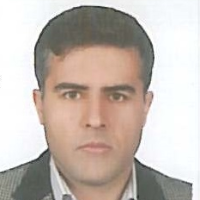The Effects of Guided Imagery Adjunct to Pharmacotherapy on Resilience in Patients under Substance Dependence Treatment
The world is facing the pervasive crisis of drug abuse. Substance dependence, directly and indirectly, degrades moral foundations in the affected individuals. Among these consequences are increased crime and violence rates. Pharmacological interventions provide promising short–term outcomes; however, they are associated with difficulties due to non–compliance with treatment and long–term maintenance of drugs. Besides, these patients are prone to relapse following the discontinuation of pharmacotherapy. Psychotherapy is not in conflict with pharmacotherapy; rather, it can complement them. Therefore, drug treatment methods, i.e., more common than other approaches in Iran, are imperfect unless used in combination with other methods. Recognizing treatment methods, like Guided Imagery (GI) along with medications, as well as helping to treat substance dependence and improve resilience to substance use are of significance. Thus, the present study aimed to explore the effects of GI adjunct to pharmacotherapy on resilience in substance–dependent patients under treatment.
This was a quasi–experimental study with a pretest–posttest and a control group design. The statistical population of this study consisted of all patients with substance dependence who were under treatment with a medical record at substance abuse treatment clinics in Tehran City, Iran, in 2017. In total, 45 subjects recruited from the Green Life Living Treatment Clinic were selected by a convenience sampling method and randomly assigned into the experimental and control groups (n=15 in the experimental GI training group; n=15 in the experimental GI group adjunct to methadone therapy; 15 controls). The inclusion criteria of the study were as follows: clients admitted to the Green Life Addiction Treatment Clinic in Tehran City, in 2017; not receiving individual counseling or psychotherapy; no history of medication use; participation in GI sessions, and no recurrence episode. The exclusion criteria included female gender; neurological disorders (as per self–expression & medical records), and presenting too much stress (self–expression of the subject based on stress); no history of recurrence and failure of treatment (the dissatisfaction of the subject to continue treatment). Data collection tools consisted of the Conner–Davidson Resilience Scale (Conner & Davidson, 2003) and GI technique package (Maltz, 2002). Initially, resilience, craving, and tendency to use drugs were tested and controlled by the subjects of the research groups (pretest). Then, the GI program was conducted in the experimental and control groups in combination with their drug therapy in eight 45–minute sessions for two months. At the end of the intervention sessions, resuming questionnaires, the craving and tendency to substance abuse were provided to the research subjects. Subsequently, the relevant data were collected (posttest). To analyze the obtained data, descriptive and inferential statistics, including Analysis of Covariance (ANCOVA) and repeated–measures Analysis of Variance (ANOVA) were used in SPSS. The significance level of the tests was considered 0.05.
The present research results suggested that GI in combination with pharmacotherapy was effective in the resuscitation of treated drug users (p<0.001). Additionally, the main effect of time on resilience was significant (p<0.001, F=2288.83). Therefore, there was a change in resilience scores between 3 different time intervals in the experimental group. The value of the Eta–squared for resilience in the main effect of time indicated that 98.8% of the variance of resilience was explained by the provided intervention.
The obtained data indicated that GI, both alone and in combination with pharmacotherapy, was effective in resuscitating and reducing the craving and re–use of substance in substance–dependent patients receiving treatment.
- حق عضویت دریافتی صرف حمایت از نشریات عضو و نگهداری، تکمیل و توسعه مگیران میشود.
- پرداخت حق اشتراک و دانلود مقالات اجازه بازنشر آن در سایر رسانههای چاپی و دیجیتال را به کاربر نمیدهد.


